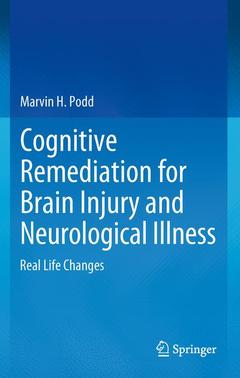Description
Cognitive Remediation for Brain Injury and Neurological Illness, 2012
Real Life Changes
Language: English
Subjects for Cognitive Remediation for Brain Injury and Neurological...:
Keywords
Alternate functional systems; Attention disorder; Brain injury; Brain recovery; Cognitive remediation; Developmental disability; Double dissociation; Executive function; Language processing; Learning disability; Memory disorder; NeurXercise; Neuropsychological evaluation; Neuropsychological intervention; Neuropsychological test; Neuropsychological treatment planning; Perceptual disorder; Recovery from neurological injury; Sensorimotor disorder
158 p. · 15.5x23.5 cm · Paperback
158 p. · 15.5x23.5 cm · Paperback
Description
/li>Contents
/li>Biography
/li>Comment
/li>
1. Introduction.- History of Cognitive Remediation.- Role Assessment in Treatment.- 4. Treatment Strategies.- 5. Cognitive Remediation with NeurXerxise.- 6. Treatment Generalization and Ecological Validity.- 7. A NeuroXercise Casebook.- 8. Conclusions.




